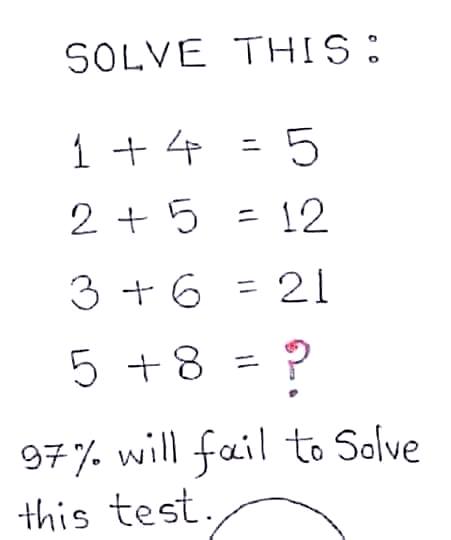In recent times, a puzzling math challenge has been circulating on social media, leaving many scratching their heads. The challenge presents a series of seemingly simple arithmetic equations with an unusual twist. The image typically reads:
The intrigue lies not in the arithmetic operations themselves, but in the pattern hidden behind the numbers. At first glance, the equations defy conventional arithmetic rules. However, a deeper look reveals a clever pattern that, once understood, makes the puzzle quite solvable. Let’s dive into the logic and unveil the method used to crack this puzzle.
Step-by-Step Breakdown
The key to solving this puzzle is recognizing that the equations follow a cumulative pattern rather than straightforward addition. Here’s how you can break it down:
- First Equation: 1 + 4 = 5
- This equation seems straightforward at first, as 1 + 4 does indeed equal 5. However, it sets the stage for the cumulative pattern.
- Second Equation: 2 + 5 = 12
- To understand this, notice that 2 + 5 equals 7. However, the answer provided is 12, which is 7 added to the result of the previous equation (5).
- So, 7 (2 + 5) + 5 (previous result) = 12.
- Third Equation: 3 + 6 = 21
- Similarly, 3 + 6 equals 9. Adding this to the previous result (12) gives us 21.
- So, 9 (3 + 6) + 12 (previous result) = 21.
Applying the Pattern
Now that the pattern is clear, let’s apply it to the final equation:
- Fourth Equation: 5 + 8 = ?
- Following the established pattern, 5 + 8 equals 13.
- Adding this to the previous result (21) gives us the final answer.
- So, 13 (5 + 8) + 21 (previous result) = 34.
